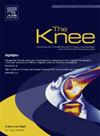改良Judet股四头肌成形术可增强创伤后僵硬患者的膝关节功能:平均随访10年的连续19例患者的病例系列
IF 2
4区 医学
Q3 ORTHOPEDICS
引用次数: 0
摘要
膝关节僵硬是高能量创伤、手术后的常见症状,导致正常日常活动的严重功能限制。目的是报告改良Judet股四边形成形术后平均随访10年的临床结果和发现并发症。方法采用回顾性观察性单中心研究,对2008年1月至2023年6月行改良Judet股四头肌成形术的19例创伤后膝关节僵硬患者进行评价。手术由同一专家外科团队完成,患者遵循相同的围手术期方案。患者临床评估采用Judet最终活动范围标准和5个评分(oos、WOMAC、Tegner-Lysholm、HSS KS、EQ-5D)。通过计算机病历检测人口统计学特征、临床病史、术中、术后膝关节屈曲及可能的并发症。结果平均最终屈曲为100.7°(范围35°-140°),屈曲增益为50.4°(范围5-100°)。根据Judet的评分标准,10例患者的评分为优(52.6%),良(36.8%)7例,一般(5.3%)1例,差(5.3%)1例。47%的病例观察到延伸滞后,平均值为8.8°(范围2-20°);只有10.5%显示明显的缺陷(大于10°)。有4例需要新的关节肌溶解术,4例围手术期并发症和2例长期并发症,主要是由于感染。结论改良Judet股四头肌成形术能有效改善创伤后僵硬患者的膝关节功能和活动能力,减少了手术的侵袭性。尽管存在一些风险,特别是在严重的病例中,当保守治疗失败时,它仍然是一种有价值的手术选择。证据级别:IV级回顾性病例系列。本文章由计算机程序翻译,如有差异,请以英文原文为准。
Modified Judet quadricepsplasty leads to enhanced knee function in patients with post-traumatic stiffness: a case series of 19 consecutive patients at 10 years mean follow-up
Aims
Knee stiffness is common condition after high energy trauma, surgeries, leading to severe functional limitation in normal daily activities. Purpose is reporting clinical outcomes and detect complications at mean follow-up of 10 years after modified Judet quadriceplasty.
Methods
Retrospective observational single center study was conducted, evaluating a 19 patients sample affected by post traumatic knee stiffness who underwent modified Judet quadricepsplasty from January 2008 to June 2023. Procedures were performed by same expert surgical team, patients followed same perioperative protocol. Patients were clinically evaluated using Judet criteria for final range of motion and five score (KOOS, WOMAC, Tegner-Lysholm, HSS KS, EQ-5D). Demographic characteristic, clinical history, pre intra and post operative knee flexion and possible complications by computerized medical records were detected.
Results
Average definitive flexion was 100.7° (range 35°-140°) and flexion gain was 50.4° (range 5–100°). According to Judet’s criteria, the result obtained by 10 patients could be classified as excellent (52.6%), 7 as good (36.8%), 1 as fair (5.3%) and at last in 1 as poor (5.3%). An extension lag was observed in 47% of cases, with 8.8° average value (range 2–20°); only 10.5% showed significant deficit (greater than 10°). There were four cases that required new arthromyolysis, four cases of perioperative complications and two long-term complications, mostly due to infection.
Conclusion
Modified Judet quadricepsplasty is effective in improving knee function and mobility in patients with post-traumatic stiffness, resulting in a less aggressive invasive technique. Despite some risks, especially in severe cases, it remains a valuable surgical option when conservative treatments fail.
Level of evidence: Level IV retrospective case series.
求助全文
通过发布文献求助,成功后即可免费获取论文全文。
去求助
来源期刊

Knee
医学-外科
CiteScore
3.80
自引率
5.30%
发文量
171
审稿时长
6 months
期刊介绍:
The Knee is an international journal publishing studies on the clinical treatment and fundamental biomechanical characteristics of this joint. The aim of the journal is to provide a vehicle relevant to surgeons, biomedical engineers, imaging specialists, materials scientists, rehabilitation personnel and all those with an interest in the knee.
The topics covered include, but are not limited to:
• Anatomy, physiology, morphology and biochemistry;
• Biomechanical studies;
• Advances in the development of prosthetic, orthotic and augmentation devices;
• Imaging and diagnostic techniques;
• Pathology;
• Trauma;
• Surgery;
• Rehabilitation.
 求助内容:
求助内容: 应助结果提醒方式:
应助结果提醒方式:


